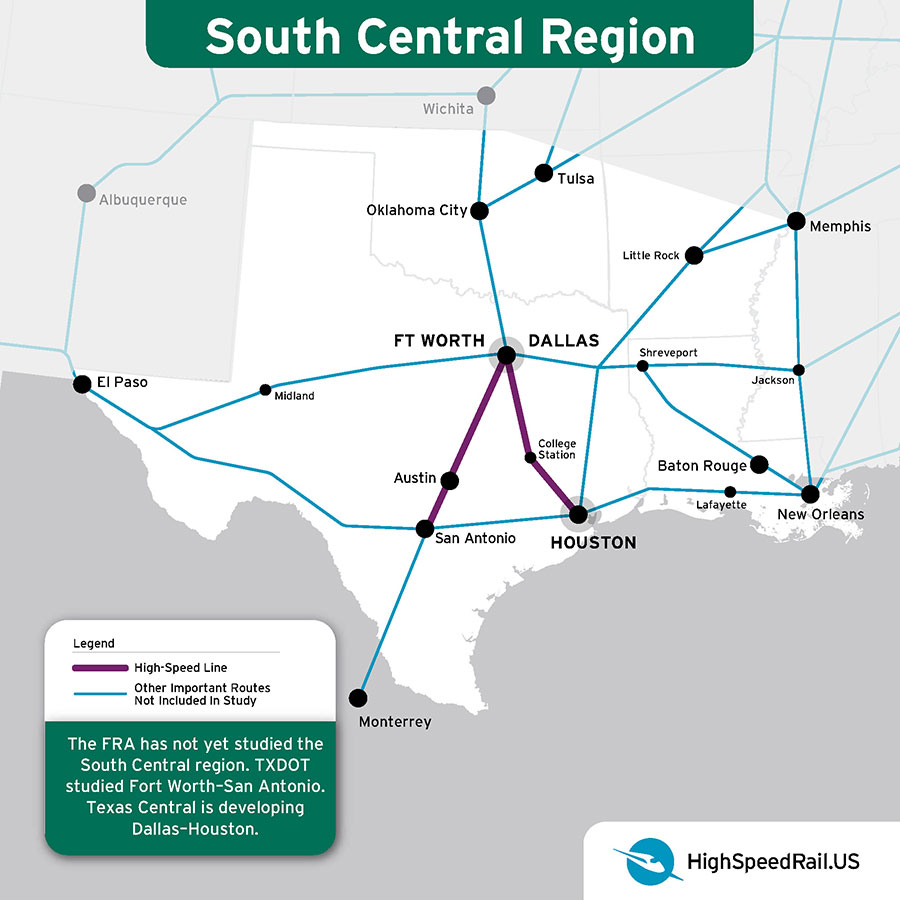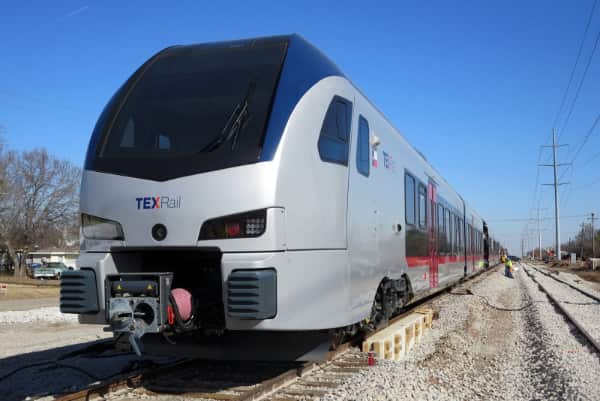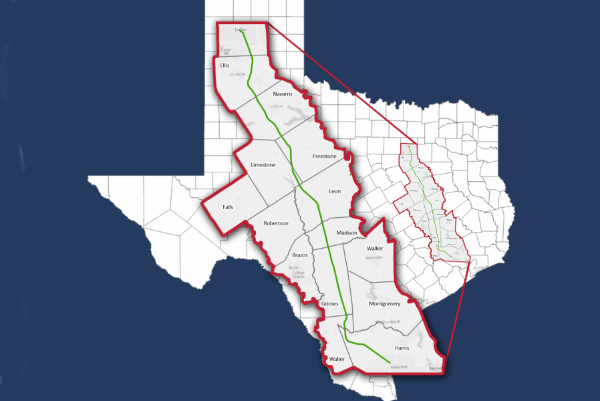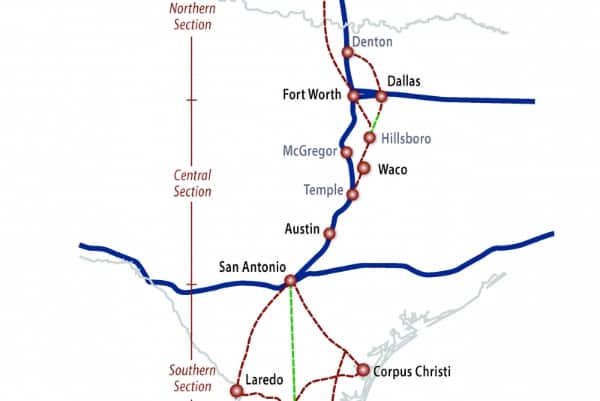The Region
The South Central region is anchored by four of the fastest-growing metropolitan areas in the U.S.: Dallas, Houston, San Antonio, and Austin.
Famous for its pivotal role in the fossil-fuel industry, the region has emerged as the national leader in renewable energy. Texas had more clean-power projects in development than any other state in 2021, for example. The South Central U.S. also boasts globally renowned cities like New Orleans; natural wonders like the Ozark Mountains and the Texas Hill Country; and vibrant mid-sized cities like Little Rock, Oklahoma City, and Tulsa, with their low cost of living and high quality of life.
The region’s explosive growth, wide-open spaces, road congestion, and thriving tourist industry have primed it for high-quality train service. Momentum for connecting it with fast, frequent trains is building in several ways.

State of Development
The Federal Railroad Administration has not yet completed a regional rail plan, but several projects projects are underway.
Texas Central
A private company, Texas Central, has completed much of the preliminary work for a high-speed line connecting Dallas and Houston. Plans call for 18 daily round trips and 200+ mph trains. The run will take about 90 minutes—or two hours less than driving.
I-35 Corridor
The Federal Railroad Administration has published a study of the Texas-Oklahoma Passenger Rail corridor, with the goal of creating a long-range passenger-rail strategy. The 850-mile corridor parallels I-35 and extends from Oklahoma City to cities in south Texas. Increasing traffic congestion will reduce average speeds on I-35 between Dallas and San Antonio to 15 mph by 2035, according to projections.

TexRail
TexRail began running a regional rail service between downtown Ft. Worth and the Dallas airport in 2019. The line’s Stadler trains, which run at 70 mph, are world-class in terms of comfort, amenities, and noise/emissions reduction. The line runs roughly 30 trips each day, each way. Plans are in the works to extend the service.


